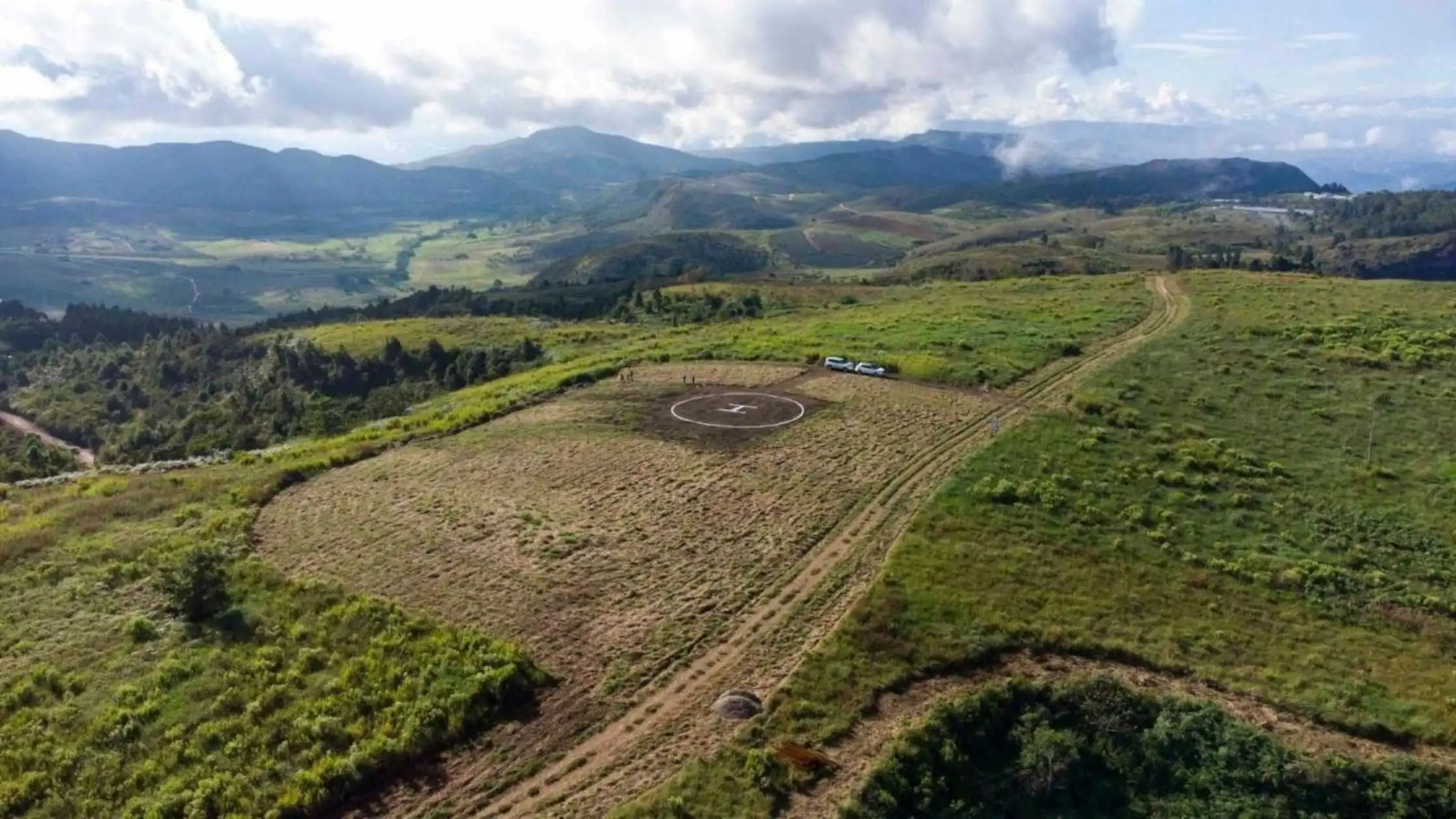Flora Growth, based in Bucaramanga, Colombia, captures rainwater on its 1,000-acre outdoor cannabis grow to supplement its irrigation water. (Photo courtesy of Flora Growth)
Cannabis growers who want to improve their cultivation sustainability methods are adopting the tenets of regenerative farming.
The core principle of regenerative farming is “closing the loop,” or trying to reuse or recycle resources in as many stages of the cannabis plant’s life cycle as possible.
The upfront cost of starting such a system can be steep, but proponents say the benefits are worth it in the long run.
For outdoor and indoor cultivators, that includes:
- Using living soil that doesn’t require added nutrients.
- Capturing wastewater for reuse.
- Reducing energy consumption through the use of more relaxedcoolers and outside air to lower the temperature in an indoor grow or greenhouse.
- Incorporating an integrated pest-management system through the use of certain insects, mites, and organisms.
- Using eco-friendly packaging.
“Regenerative farming in today’s industry means trying to close the loop in as many ways as possible,” said Lex Corwin, founder of Stone Road, a cannabis company with a grow site in Nevada City, California.
A smaller footprint
At Stone Road, the company avoids drawing power or water from outside sources.
Instead, the company relies on solar power and artesian wells for its energy and irrigation needs.
For Corwin, regenerative farming means making compost and using local amendments to provide nutrients for the cannabis plants instead of buying nutrients at the store and trucking them to his farm.
For pest control, rather than spraying pests with chemical-based pesticides, Stone Road uses a system of beneficial fungi to protect plant roots.
The company also deploys ladybugs and predator mites to fight off nasty bugs such as aphids.
In addition, Corwin seeks out sustainable-packaging solutions.
“The amount of mylar bags this industry uses is criminal,” he said. “There are paper and other recyclable options out there for comparable prices.
“It’s ultimately trying to lower your footprint in any way possible.”
An unlikely method
Corwin gave the following example: Ladybugs are an effective way to control harmful mites.
But without a tree to build a nest in, the alternative is to order the critters from a local grow store, which might truck them in from out of state.
The ladybugs must be picked up by car or truck.
“You’ve spent time, money and a ton of fuel to get those lady bugs there,” he added.
Getting that system set up can be financially draining, according to Corwin. But it’s worth it.
“Once up and running, a closed-loop nutrient and pest-management system will save you tons of money,” he said.
“All of this effort took years to get it completely operational, but now that we’ve invested the time, energy and capital – our costs are a fraction of a similar-sized grow.”
Soil like a city
For Javier Franco, vice president of agriculture for Flora Growth, a cannabis company based in Bucaramanga, Colombia, regenerative farming means returning the balance to nature that farming can disrupt.
“We try to conserve everything,” he said, “and interact with all the elements we have in nature.”
The 1,000-acre outdoor marijuana farm captures rainwater, for example, to supplement its irrigation water.
More than anything, Franco focuses on the living soil and making sure it’s replete with microorganisms, compost, and all the critical ingredients for growing healthy plants.
He aims to have at least 10,000 species of microorganisms, including bacteria, feeding his cannabis.
“The idea is to have as many species active and living as you can,” Franco said.
He thinks of his soil as a city. “You need life, not just concrete and buildings.”
To keep the soil healthy, Franco uses crop rotation and will plant legumes, including red beans, in the fields that are not planted with cannabis.
Rotating crops allows the soil to replenish nutrients that one type of plant depletes and can reduce the need for adding fertilizer.
According to Franco, employing regenerative farming practices is good for growing robust crops.
“We have very good productivity compared to crops in the same region,” he said.
“We have a final product that is healthier than a product that is managed with conventional agriculture practices.”
Indoor-equipment solutions
It isn’t easy to grow in a fully regenerative manner in an indoor facility or greenhouse, said Mike Kupferman, founder and CEO of RMJ Supply, a New York company that specializes in cultivation facility design, equipment procurement, and optimization.
One challenge, for example, is that many growers want to use crop steering in greenhouse operations, where specific nutrients are added to plants at certain times of the day.
However, a grower using regenerative practices trying to reuse irrigation water might need to learn precisely how much fertilizer remains in the reclaimed water.
Therefore, the fertigation process could be more precise.
Kupferman recommends that indoor growers who want to reduce their energy use consider free cooling, which means using cooler outside air to regulate indoor temperatures.
He advises caution, though, because outside air can contain contaminants such as mold.
Growers often use a Minimum Efficiency Reporting Values (MERV)-rated filter to keep out contaminants in fresh air.
For the sustainability-minded grower, Kupferman also recommends incorporating soil that doesn’t require added nutrients.
“Using living soil is as close to regenerative ag as possible in a horticulture setting,” he said.
Overall, he does see a push for more sustainable growing practices coming from both the industry and the consumer.
“It’s such a resource-intensive crop,” Kupferman said of cannabis. “We can’t keep going on like this.”
According to Kupferman, for it to work, a company must prioritize regenerative farming, even if it doesn’t make the most financial sense.
“It’s tough to be regenerative,” he said. “But there are steps people can take to be more sustainable.”
Disclaimer: https://mjbizdaily.com/how-cannabis-growers-can-use-regenerative-farming-to-boost-sustainability





